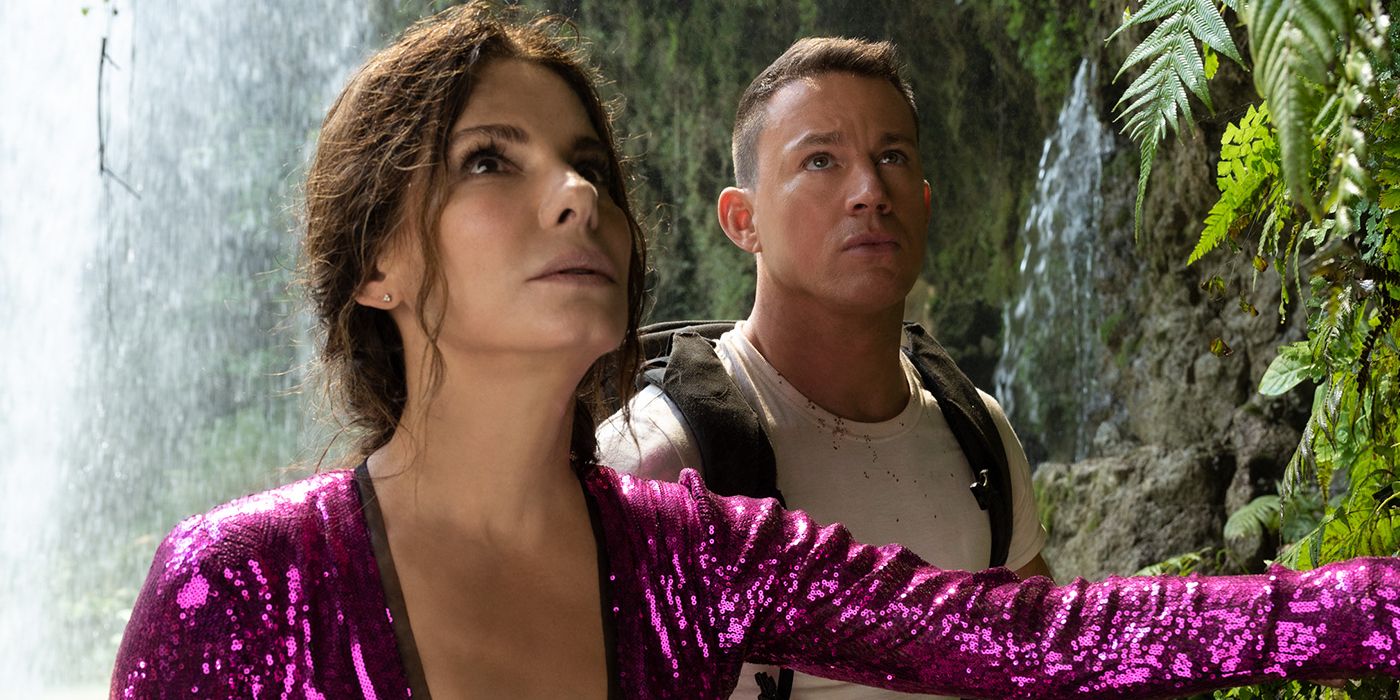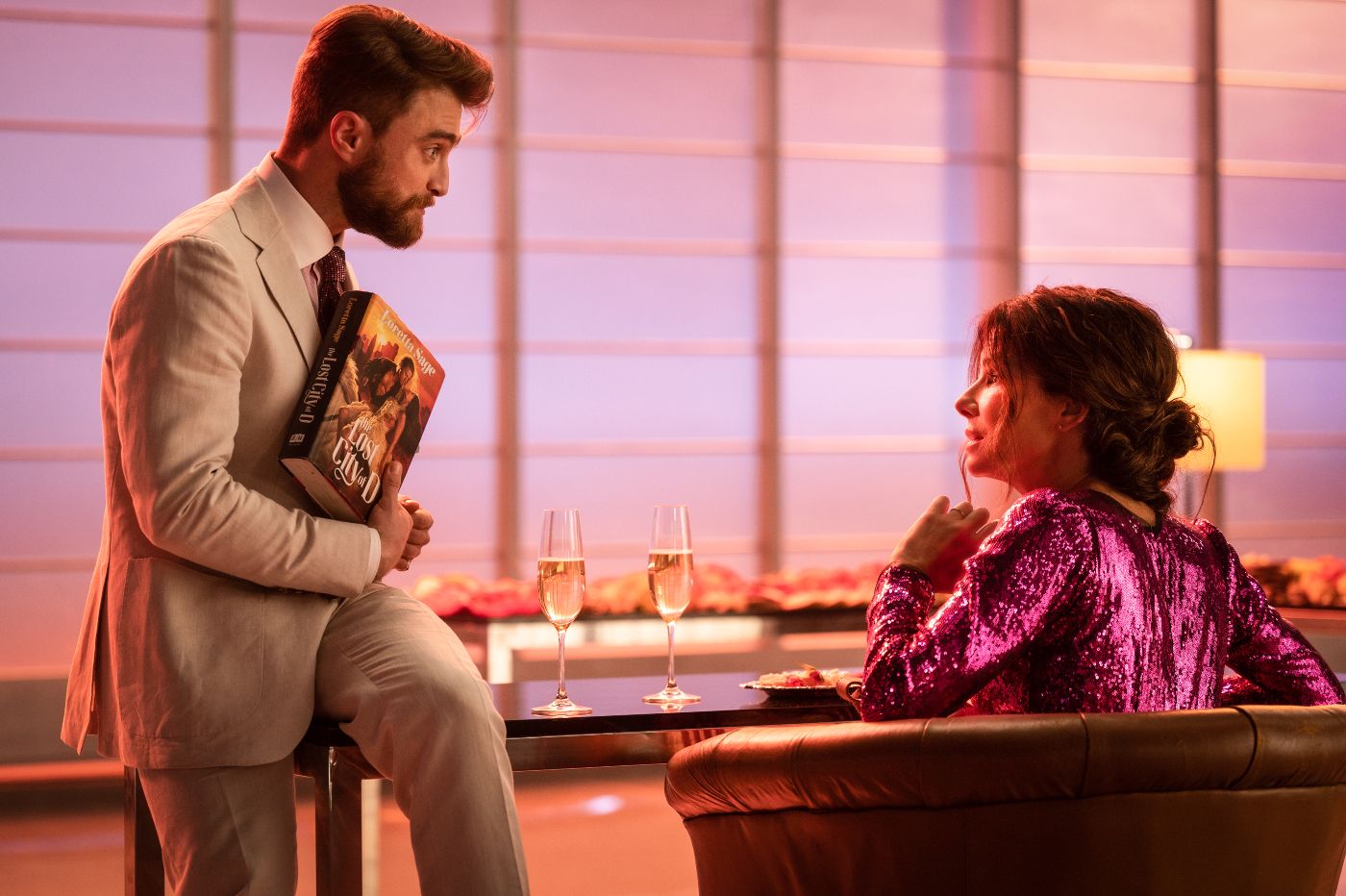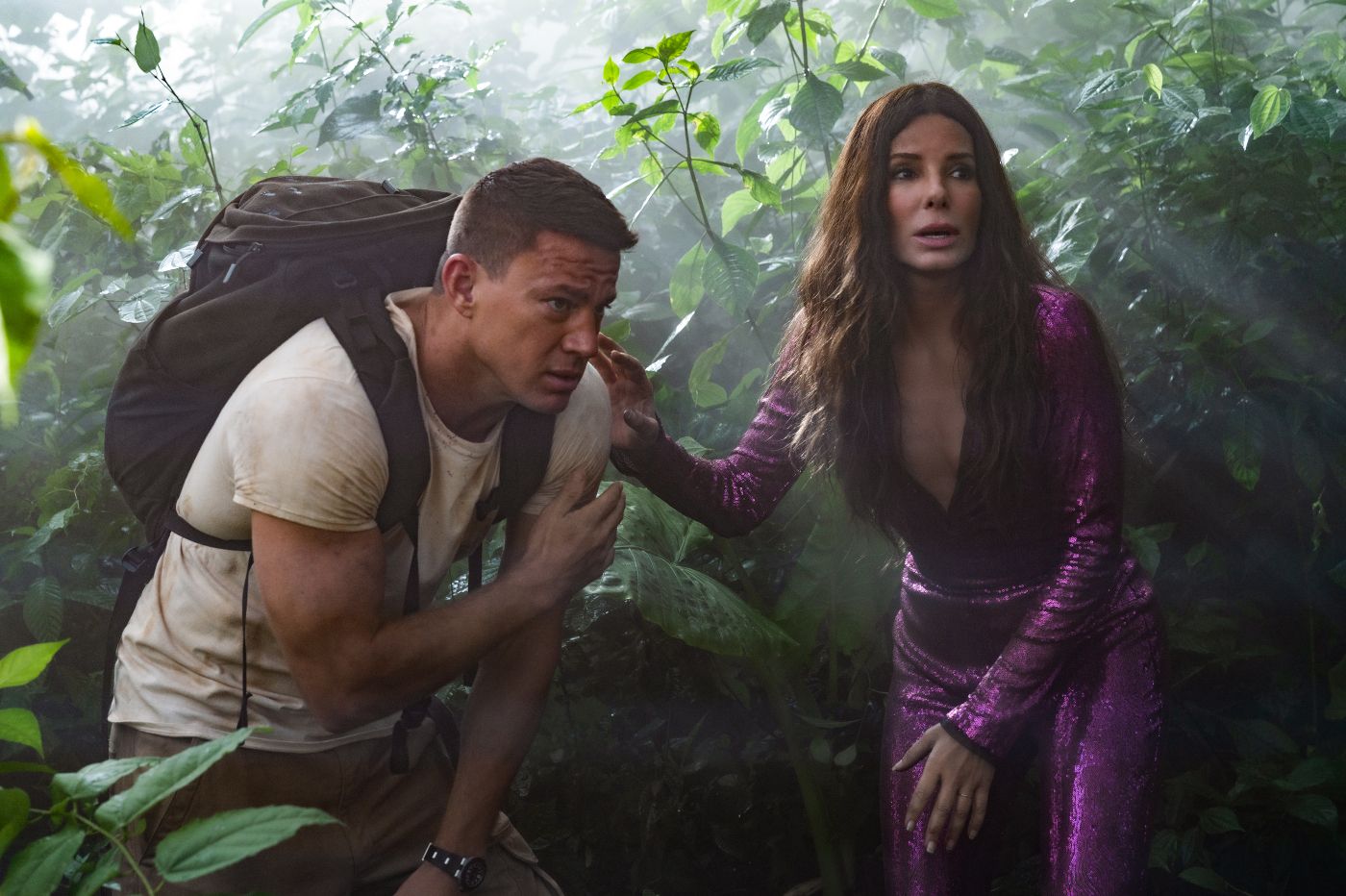The Lost City, the recent action-comedy directed by Aaron Nee and Adam Nee, follows author Loretta Sage (Sandra Bullock), a romance novelist on the brink of giving up writing forever after suffering through her last novel. However, just after she declares this book tour to be her last, she’s whisked away by an eccentric billionaire, Abigail Fairfax (Daniel Radcliffe). He believes Loretta can help him track down the treasure her novel’s protagonists were seeking which turns out to be based on a real historical legend. And through all of this, Loretta’s cover model Alan (Channing Tatum) decides to prove his worth by setting out to rescue Loretta himself.
Together, Loretta and Alan work to escape the bad guys and find the treasure before their hunters can — all while working under the time constraints of an active volcano. By the end, they’ve solved the mystery of the tomb's location, and after Fairfax captures them once again to force Loretta to show him the treasure’s location they find… no treasure at all. The crown that was spoken of in the surviving bits of history was not made of jewels but rather shells, its value nearly entirely sentimental. It’s an anti-climax for a traditional treasure hunting story, but a fitting first step for what this genre may in time evolve into.
In premise, The Lost City is an ordinary treasure hunting movie. But in practice, the film veers far from the Indiana Jones-style treasure hunt ending where the villain is defeated, and the heroes claim the ancient idol for themselves. From pretty early on, it’s established that treasure hunting is a kind of scummy thing to do and this is only elaborated upon further as the film goes on. A traditional treasure hunt sees our heroes travel to exotic locales and return home with riches beyond compare, but this story is outdated and lacks the kind of nuance a modern audience demands.
Treasure hunting stories are steeped in imperialist ideology. They come from a notion that an ancient civilization and its riches must be claimed by well-meaning foreigners in order to fully appreciate their cultural legacy. These places are dead and gone, and so we must plunder them. It glorifies modern acts of colonialism by showcasing the robbery of cultural artifacts as something glamorous, exciting, and most importantly, something that couldn’t possibly be done by people of that culture.
The Lost City lampoons this claim quite early on. The island Loretta is brought to is still inhabited. This is not a lost civilization they are trying to revive; it’s a culture’s history they’re attempting to plunder. At one point, Loretta addresses how she and her late husband had studied this ancient city for a time and specifically highlights the impact of colonialism on both the island and their later research on it. We also see some of the locals who’ve been lured into working for Fairfax through generous pay expressing reservation in defacing and robbing the ruins. The relationship between the billionaire villain and the islanders is a perfect extension of that imperialist exploitation. Fairfax uses local forces to dig up their own land, so he can claim their ancestor’s treasure for himself–not to further preserve the history of this culture but simply to fuel his sibling rivalry. The film is still lighthearted, of course, but these acknowledgments throughout help to ease the viewer into an understanding that getting the treasure is not necessarily a good thing.
The Lost City takes a different approach. The treasure is not found by the eccentric billionaire with his piles of resources. Instead, it’s Loretta’s cultural knowledge that leads them to the treasure’s resting place and reveals the truth of it. A mural on the wall describes how the crown was made and the value it held–almost entirely sentimental. There is no treasure, not in the traditional sense, just a greater understanding of the culture it belonged to. The film not only ties success in the treasure hunt to a compassionate knowledge of the culture it belongs to, but ultimately condemns the imperialist mindset that would seek to claim any treasure from a still-inhabited island for itself.
The kinds of treasure hunting stories we grew up with are unfeasible today. They can be fun in the moment but fail to hold up under closer scrutiny. The stories themselves are exciting but the story of a white person looting a foreign land for their own fame and fortune sounds much more like a villain than a hero. The real-world implications of glamorizing such an act for the silver screen are harder to ignore, but the excitement of these stories can still be preserved, as we see with The Lost City. They simply need to transform. By centering the story more on discovering a deeper level of cultural understanding rather than any treasure in and of itself, there are fewer looming, deeply troubling implications. It becomes an act of appreciation rather than appropriation. Loretta survives her experience in the tomb without any monetary form of wealth but with a deeper understanding of herself and this place she and her husband had learned so much about. It’s less glamorous than a crown of rubies or a golden idol, but it develops from a place of compassion rather than self-fulfillment. Treasure hunt movies filled with riches beyond compare may be dead, but the thrill of discovery that comes with such an adventure can be preserved in another form. Just take a page out of The Lost City's book.



